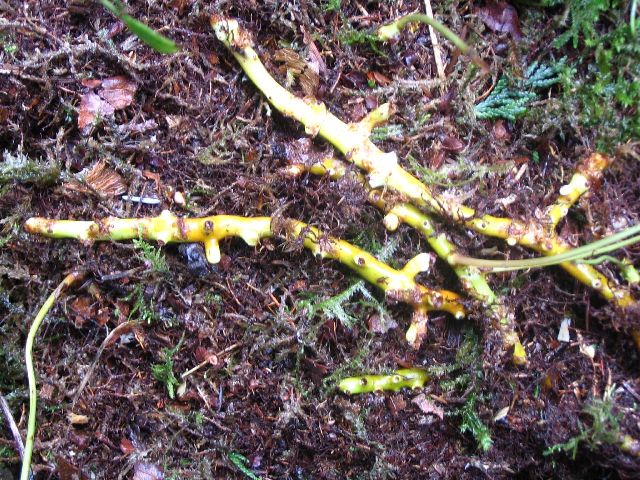Adaptation
The most notable adaptation made by ferns is the presence of a rhizome. The rhizome, or stem, of the Licorice Fern develops horizontally beneath the soil, containing a growing tip that gives way to new frond development. The consistency of rhizomes can vary from wood-like hardness to plush-like softness in texture. The inside of the rhizome contains vascular tissue that transports essential minerals, water, and food to the rest of the plant when needed. For more on rhizomes click here!
[Above] Removed Licorice Fern rhizomes, photo by Chris Corrigan
Another notable adaptation of fern plants is their pinnately compounded leaves. This adaptation proves to be a recognizable characteristic of fern plants and a beneficial one as well. By having compounded leaves, ferns increase their overall surface area. What is the advantage of being larger? Why is this a good characteristic to have? To answer that one must appreciate the molecular aspect of how organisms function. By having more surface area by means of leaves, (the holders of crucial chloroplasts/where light reactions turn light into sugar), the plant has a far more likely chance of survival. This increased surface area and sugar production allows the plant to grow when the environment allows for it, therefore letting the fern grow towards its light source increasing its overall mass at the same time.
The increase in mass can mean life or death to a primary producer and photoautotrophic organism when preyed upon by heterotrophs. Other adaptations have been made within the ferns, some with other organisms. To check out some of these truly unique and incredible interactions, click here!
To return to the home page, click here.
